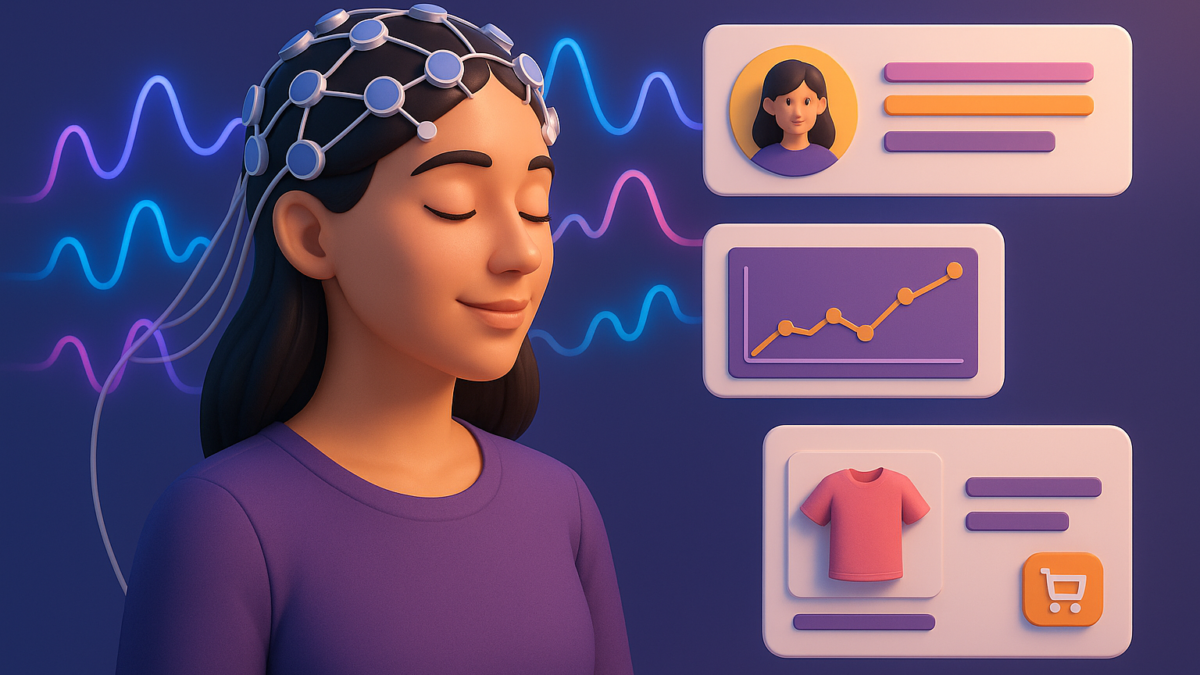NeuroTech-Driven Customer Experience: Using Brainwave Analytics for Hyper-Personalized Marketing
Table of Contents
1. Introduction: What is NeuroTech in Marketing?
NeuroTech Customer Experience combines neuroscience and technology to understand how customers think, feel, and make decisions. By capturing brainwave activity and cognitive responses, marketers can design campaigns that resonate on a deeper, emotional level.
In 2025, NeuroTech is no longer futuristic—it’s shaping how brands deliver personalized, meaningful experiences across digital platforms.
2. Understanding Brainwave Analytics
Brainwave analytics tracks neural activity to reveal insights such as:
- Emotional engagement with content
- Attention levels during website visits or ads
- Decision-making patterns for purchases
Using sensors, EEG devices, or wearable technology, marketers can collect this data and optimize content, messaging, and product offerings for maximum impact.
3. How NeuroTech Enables Hyper-Personalization
NeuroTech allows brands to:
- Tailor messaging in real time: Show content based on a user’s emotional state.
- Predict customer behavior: Identify high-intent leads before they take action.
- Enhance user experience: Reduce friction in digital journeys and improve satisfaction.
Example: A B2B SaaS platform could adjust dashboard features dynamically, depending on cognitive load and user attention.
4. Tools and Platforms for NeuroTech Marketing
Several tools enable NeuroTech-driven campaigns:
- Emotiv Insight: Tracks brainwave activity to measure engagement
- Neurable: Integrates brain-computer interfaces for interactive marketing
- iMotions: Combines eye-tracking, facial coding, and EEG for holistic insights
These platforms help marketers translate neural data into actionable strategies.
5. Ethical and Privacy Considerations
Collecting neural data comes with responsibilities:
- Obtain explicit consent from users
- Ensure data security and anonymization
- Avoid manipulative tactics that exploit cognitive vulnerabilities
Brands that follow ethical guidelines can build trust while leveraging NeuroTech advantages.
6. Case Studies: Brands Leveraging NeuroTech
Some innovative examples:
- Coca-Cola: Uses neuroanalytics to measure emotional response to ads.
- Nike: Experiments with cognitive engagement metrics to optimize digital campaigns.
- Startups: B2B SaaS companies are exploring NeuroTech for real-time UX personalization.
These case studies show measurable improvements in engagement, conversions, and customer satisfaction.
7. Future Trends in NeuroTech Customer Experience
Expect these developments by 2026–2027:
- Widespread adoption of wearable EEG and NeuroTech sensors
- AI-powered brainwave analysis for instant personalization
- Integration with AR/VR and the metaverse for immersive experiences
NeuroTech will make marketing more human-centered, predictive, and emotionally intelligent.
8. Conclusion
NeuroTech Customer Experience is the next frontier in hyper-personalized marketing. By leveraging brainwave analytics, brands can understand their audience on a cognitive level, optimize campaigns in real time, and create emotional connections that drive loyalty and conversions.
How Whitepapers Can Accelerate ABM (Account-Based Marketing) Strategies in B2B





